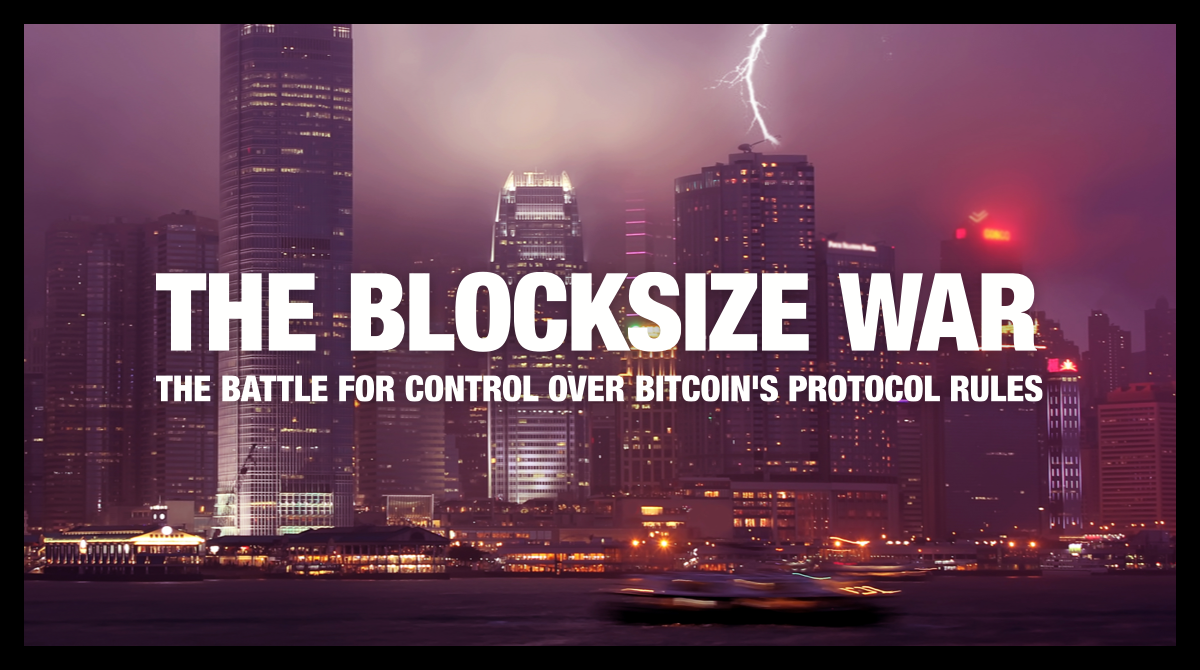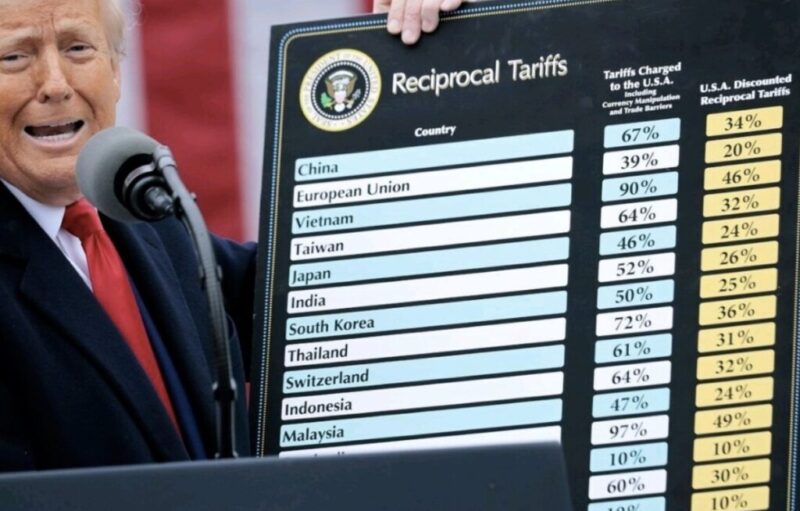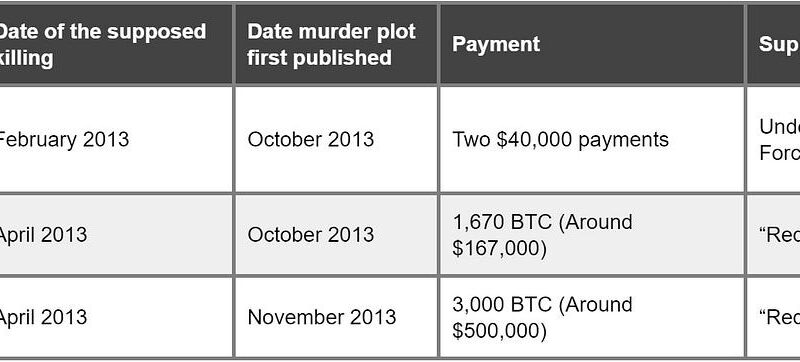Chapter 19 of the book The Blocksize War is published below. The full book is available on Amazon. As a reminder, 50% of any profits from physical book sales will be donated to Médecins Sans Frontières, a charity that provides medical assistance to people affected by conflict, epidemics, disasters, or exclusion from healthcare.*
* Note: Applies to sales up until the earlier of i. the death of the author and ii. January 2031
The Blocksize War – Chapter 19 – Bitcoin Cash
On June 30, 2017, in Arnhem (The Netherlands), a large blocker conference was held, called “The Future of Bitcoin Conference 2017”. Speakers included Jihan Wu, Andrew Stone from Bitcoin Unlimited, Craig Wright (who gave a long and rambling speech) and a little-known developer called Amaury Sechet. Amaury gave a speech entitled “Back to basics”, where he presented what he called “a small project that I have been working on”. He outlined plans for a new hardfork, with a blocksize limit increase and optional replay protection, to allow those that don’t want a blocksize increase to continue on their old chain. Amaury announced a new client, Bitcoin ABC, stating that this was an implementation of the plan Jihan had announced a few weeks ago, the UAHF.
Around July 12, 2017, just a few weeks away from the UASF deadline of August 1, 2017, the new client, Bitcoin ABC, was released. Unlike the previous hardfork clients, Bitcoin XT, Bitcoin Classic, Bitcoin Unlimited and now BTC1, there was fixed flag day activation on August 1, 2017 and no miner signalling. This was deliberately arranged to coincide with the UASF deadline. This new chain would include wipeout protection, resulting in a clean break, and would conduct a hardfork blocksize limit increase. The new alternative coin would also exclude SegWit, something very unpopular with large blockers, although in reality, when you looked under the hood, Bitcoin ABC did actually include much of the SegWit upgrade, including the new transaction digest algorithm which fixed some transaction-related bugs. However, it appeared as if covert ASICBoost would still be possible on this new chain.
Finally, the large blockers would get what they wanted: a large blocksize limit chain, without using clients released by Bitcoin Core and without the inflexible and cautious approach to changing the consensus rules, which large blockers detested above all else. On July 17, 2017, ViaBTC, now widely regarded as a proxy for Jihan that would often test the waters before Bitmain itself announced a new policy, stated that it would start a new mining pool that would mine the new coin. They named the coin Bitcoin Cash, with the ticker BCC. This ticker would eventually change to BCH.
We will designate the token “Bitcoin Cash” (BCC) to the possible split coin led by the activation of UAHF
While many in the large block community supported Bitcoin Cash, most saw it as either a backup plan or contingency plan, to use in the event that phase two of the NYA failed. On July 25, 2017, Roger Ver, the CEO of Bitcoin.com stated that:
If the 2X portion of Segwit2x fails to activate, Bitcoin.com will immediately shift all company resources to supporting Bitcoin Cash exclusively.
On July 23, 2017, with just one week to go until Bitcoin Cash launched, a co-founder of one of the largest cryptocurrency exchanges at the time, Ben Delo, raised an issue on the Bitcoin ABC GitHub. Ben asked for mandatory replay protection, rather than the optional replay protection that had been implemented. Ben was concerned about his role as a fiduciary for his clients and that he may either lose their Bitcoin Cash, or have to spend considerable resources in order to prevent his platform being vulnerable to replay attacks. Although some questioned whether this was in the spirit of Jihan’s original plan, and mandatory replay protection was a favourite demand of small blockers, Amaury, who was keen to please exchanges and get them to support the new token, complied with the request from Ben. With just six days to go until the coin was created, mandatory two-way replay protection was added to Bitcoin ABC. We were therefore finally going to have a clean split, and the two sides in this war could peacefully part company.
As Bitcoin Cash had expected to be the minority hashrate chain, one of the concerns was that blocks would be too slow at the start and Bitcoin’s two-week difficulty adjustment period would then take too long to have an impact. Bitcoin Cash therefore lowered the difficulty requirement, which had another inadvertent benefit: it meant the Bitcoin Cash block headers were incompatible with Bitcoin, and therefore even Bitcoin light clients and mobile wallets would always know not to follow the Bitcoin Cash chain. This was another key safety feature which small blockers had been proponents of. However, the new difficulty adjustment algorithm later proved to be fundamentally flawed, as it incentivised miners to leave the network and then return when the difficulty adjusted and profitability improved. The impact of this was that the capacity of the Bitcoin Cash network oscillated in a volatile way, which proved to be a major weakness and impacted the reliability of Bitcoin Cash as a payment network. It also caused blocks to be mined faster, which eventually resulted in Bitcoin Cash being around 10,000 blocks ahead of Bitcoin, with more block subsidy coins mined earlier. This was a bad error from Amaury. He should have just done a one-off downward difficulty adjustment when Bitcoin Cash was launched, rather than producing an entirely new algorithm. The algorithm was, eventually, significantly improved; however, at the time of writing, the problem has not been entirely solved.
As Tuesday August 1, 2017 approached, excitement grew on both sides of the war: this was set to be a truly monumental day in the blockchain space. The last common block between Bitcoin and Bitcoin Cash was at height 478,559, mined at 1.16pm UTC on August 1, 2017 by the BTC.com mining pool. The next Bitcoin block was mined seven minutes later by ViaBTC. The first Bitcoin Cash block was not mined for another five hours or so, also by ViaBTC. The message inside the coinbase transaction read: “Welcome to the world, Shuya Yang!” and the size of the block was 1.9 MB.
The coins had finally split, and each side could now pursue its own vision. The following Bitcoin Cash block was also mined by ViaBTC. The third Bitcoin Cash block, mined late in the night Hong Kong time, was produced by an unknown miner and the coinbase message this time was the phrase: “Genesis Block 269-273 Hennessy Road Wan Chai Hong Kong.”
When I arrived at work early the next day, I noticed that the overwhelming majority of the Bitcoin Cash blocks contained this same mysterious message. I quickly looked up the address on Google Maps and it appeared to be pretty close to where I was based. Like any true cryptocurrency fanatic would, I immediately left my desk and made my way there. About 15 minutes later, I arrived at the location and could not see anything of note. After around five minutes of peering around, I noticed Ben Delo, the exchange owner who had insisted on mandatory replay protection, who also appeared to be investigating the situation, wandering up and down the street. Chatting to him, it appeared as if he was in the same situation as me, deeply confused. Eventually, we discovered an open door leading up some stairs. We knocked and shouted “hello”, but there was no answer. Thinking this was some kind of mysterious Bitcoin game, we walked up the stairs uninvited, only to find what looked like a construction site. After about five minutes of exploring, we finally found someone who could explain the situation to us. The building was to be the site of a new Bitcoin space in Hong Kong, for startups and community meetings. The message in the Bitcoin Cash blocks was just marketing, and the owner of the organisation, Peter Ng, also had a mining farm he had allocated to Bitcoin Cash to help market his new venue. However, the site was not ready yet and we were early. Disappointed we hadn’t found some magic Bitcoin Cash gemstone, we slowly left and we each went back to work.
The mood inside the large blocker community at this point was one of sheer elation. They had felt trapped, bullied and imprisoned by the small blockers for years, and now they finally had their freedom. They finally had a coin to promote to merchants again and to use freely without the crippling high fees imposed on them. This coin was theirs and they were in control, just like they had once felt about Bitcoin years ago. There was also a sense of vindictiveness about this. It was a chance to show the small blockers what they could do on their own with their new coin, to prove them wrong.
In the small blocker camp, the main strategy appeared to be to ridicule the new coin as a stupid idea. Some small blockers had coined the phrase “BCash”, as a kind of troll insult name, rather than Bitcoin Cash, removing the word Bitcoin from the name and further dissociating it from Bitcoin. This appeared to get under the skin of some of the large blockers, notably Roger Ver, which only encouraged further use of the name. There was also a financial aspect to the split: every holder of Bitcoin before the split now had an equal amount of Bitcoin and Bitcoin Cash. The opposing sides could sell the coin they did not favour and accumulate more of their chosen coin. To the small blockers, Bitcoin Cash was sure to trade at a low price, perhaps around two percent of Bitcoin, indicating the fundamental flaws in the large blocker vision, the lack of investor demand and the technical mistakes the large blockers were sure to make. Some small blockers declared that they would sell their Bitcoin Cash holding, driving the price down to two percent.
In private, deep inside some small block circles, the approach to Bitcoin Cash among some of the larger coin holders was very different to the ridicule displayed in public. There was a much more nuanced and tactical view. I remember speaking to a respected small blocker at the time, with large Bitcoin holdings. Privately, he told me that he was keen not to sell his Bitcoin Cash too quickly. It was “vital to ensure Bitcoin Cash was successful” he explained, adding that if they sold too much too fast, the price would fall and the large blockers would not be optimistic about their new coin. Most small blockers wanted the large blockers to leave Bitcoin and stop causing trouble by promoting dangerous hardforks, advocating for aggressive blocksize limit increases and delaying important upgrades such as SegWit. It was therefore considered important to ensure Bitcoin Cash had sufficient “exit momentum” to make certain that some of these large blockers left for good. The large blockers appeared to think that the small blockers would hate the idea of Bitcoin Cash, preferring to keep them trapped inside Bitcoin. However, this appeared to be a misconception, as almost all small blockers I spoke to were delighted to see them leave.
Bitcoin Cash had launched so quickly, within around just one month from the genesis of the idea, that Bitfinex did not even have time to launch a futures market. The coin just launched. Trading of the token began almost immediately on several exchanges such as Kraken, with Bitcoin Cash trading at around 10 to 12 percent the price of Bitcoin. However, one could not deposit Bitcoin Cash, since it wasn’t clear if mining was secure enough yet for exchanges to accept deposits. Therefore, traders could only trade Bitcoin Cash allocated to their accounts as the split occurred. For example, if a user held one Bitcoin at Kraken prior to the split, they were allocated one Bitcoin and one Bitcoin Cash. The launch of Bitcoin Cash had caused massive problems for many of the exchanges which could not keep up with the demand of users wishing to trade Bitcoin Cash. Exchange websites went offline and the lag between order submission and execution became extremely long. Kraken, in particular, handled the situation extremely poorly, with some users reporting it took literally days for market orders to execute.
It is at this point when the situation gets a little complicated. There were not just spot exchanges, but also leveraged platforms using margin and Bitcoin debt markets, which created difficult choices for the exchanges. During the Bitcoin Cash hardfork, different financial platforms had different policies. For example, derivatives platform BitMEX essentially ignored Bitcoin Cash, and the futures price just followed Bitcoin. However, Kraken, for example, supported Bitcoin Cash, in such a way that those with long margin positions on Bitcoin were also given Bitcoin Cash. Therefore, you could deposit one bitcoin, open a 3x margin long position, and then collect four Bitcoin Cash coins after the split. Critically, on Kraken, if you were short Bitcoin at the time of the fork, you were then automatically short Bitcoin Cash.
These different policies between exchanges could be exploited: they provided asymmetry, which in theory can be used to earn free Bitcoin Cash. For instance, by shorting Bitcoin on BitMEX and going long on Kraken before the split. The largest exchange in the space at the time, Bitfinex, even had inconsistencies within its own policy. If you had lent out Bitcoin at the time of the split on Bitfinex, then you were also owed Bitcoin Cash post-split. However, if you had borrowed Bitcoin at the time of the split, you didn’t have a Bitcoin Cash liability post-split. This created a shortfall at the exchange and a Bitcoin Cash distribution coefficient of 0.85. If you had one Bitcoin on Bitfinex at the time of the split, you were only allocated 0.85 Bitcoin Cash. Meanwhile, those who exploited this inconsistency in Bitfinex policy made handsome profits. One may think this policy was inappropriate, however everything was so new at the time and it was difficult to conceptualise what was going on and formulate the correct policy. The rationale for this policy was that the burden on customers who had borrowed Bitcoin to go out into the market and buy Bitcoin Cash may have been too high, particularly if the liquidity of Bitcoin Cash was low.
After around a week of volatile trading, on August 6, 2017, major exchanges finally started to accept Bitcoin Cash deposits. The first such exchange was Bittrex. Up until this point, there was no way for the small blockers to sell their Bitcoin Cash, unless they kept their Bitcoin on an exchange pre-fork. This is not something many Bitcoiners liked doing; they preferred to avoid counterparty risk and hold their own private keys. At this point, small blockers could finally send their Bitcoin Cash to an exchange and sell them. Many small blockers wanted to sell their Bitcoin Cash as soon as possible, as they thought it was overvalued and that the price would drop once others had the opportunity to sell. The first step was to spend the Bitcoin and send it to a different wallet, and only then import your private key into your new Bitcoin Cash wallet to spend the coins. That way, the Bitcoin were never at risk from security vulnerabilities in the Bitcoin Cash clients. The small blockers could then send their Bitcoin Cash to Bittrex and start selling. However, it was a long wait. Given the hashrate volatility of Bitcoin Cash that was driven by the new difficulty adjustment algorithm, exchanges demanded many confirmations and it took several hours to make a deposit. Those wishing to sell Bitcoin Cash were all queued up in the blocks, waiting for sufficient confirmations to sell.
Finally, as the first blocks were mined that enabled users to trade, the price of Bitcoin Cash instantly plummeted, by almost 20 percent. Traders were so keen to sell Bitcoin Cash that they quickly market sold the coin as soon as their funds had cleared. It went on for hours like this, with the Bitcoin Cash price plummeting every time a block was mined, something the small block camp were keen to exploit and which they joked about on social media. Some of the trading funds in the space had then started to see the pattern: from their point of view, the small blockers were ideological sellers and this was an opportunity to be exploited. These funds would buy Bitcoin Cash when the small blockers sold, at the time the new blocks came out, and then sell it back in the interim, waiting for the next block. The market shenanigans driven by the split were quite extraordinary.
After this initial excitement, and a few Bitcoin Cash rallies, the price appeared to settle in the seven to 15 percent range. The view inside the Dragons’ Den and some Telegram groups favouring the small blockers was quite sophisticated and cautious. Messages were going around urging people not to sell Bitcoin Cash for less than seven percent of the price of Bitcoin. The rationale here appeared to be that this was a mechanism to make the large blockers pay up. Consider, for example, if the conversion price between Bitcoin Cash and Bitcoin was one percent; this would mean that, if the large blockers had just 210,000 Bitcoin prior to the split, they could, in theory, buy up and corner the entire Bitcoin Cash market, all 21 million coins. Once this was done, the large blockers could then pump the price up and generate handsome profits, making them wealthy and keen to take on Bitcoin from a position of strength. In contrast, if the exchange ratio was 10 percent, this would cost the large blockers 10 times more Bitcoin to accumulate Bitcoin Cash. Some of the small blockers were aware of this problem and this is why they encouraged their fellow small blockers not to sell, at least not below seven percent. “Make them pay” was a popular phrase that spread privately deep inside some small block circles at the time. I found these developments absolutely fascinating. What had been very much a cold war, essentially a battle about communications and politics, was now very much a financialised hot war about investment flow, markets, trading and profits.
In early September 2017, I met with a group of several prominent large blockers. The consensus opinion was that the main idea of Bitcoin Cash was a threat, and it would force the wider ecosystem to adopt phase two of the NYA. People would see that the large blockers are “not playing around” anymore, due to the existence of Bitcoin Cash. The plan was working, they assured me, as the threat from Bitcoin Cash was very real. I remember thinking that they could not have been more wrong. Firstly, Bitcoin Cash was a chain-split; it reminded the miners and exchanges that a chain-split was almost inevitable if phase two of the NYA occurred. The Ethereum split in July 2016 was more than a year ago and fading from memory, and now Bitcoin Cash was a fresh reminder. Bitcoin Cash had also placed a large administrative burden on exchanges and introduced a whole range of complexities, such as how to handle margin balances and debt markets. The last thing exchanges wanted was to do this all over again in a few months’ time. At the same time, small blockers now argued that the large blockers had violated the NYA by supporting a new spin-off coin, and therefore the NYA was void. Indeed, if, after signing the agreement, one can support multiple branches of the chain, what is the point of the agreement? By asserting that Bitcoin Cash would help ensure the ecosystem complied with phase two of the NYA, large blockers had totally misunderstood the situation and actually got it backwards. It appears as if the large blockers shot themselves in the foot, yet again. Another major tactical blunder.
Related
The post appeared first on Blog BitMex







